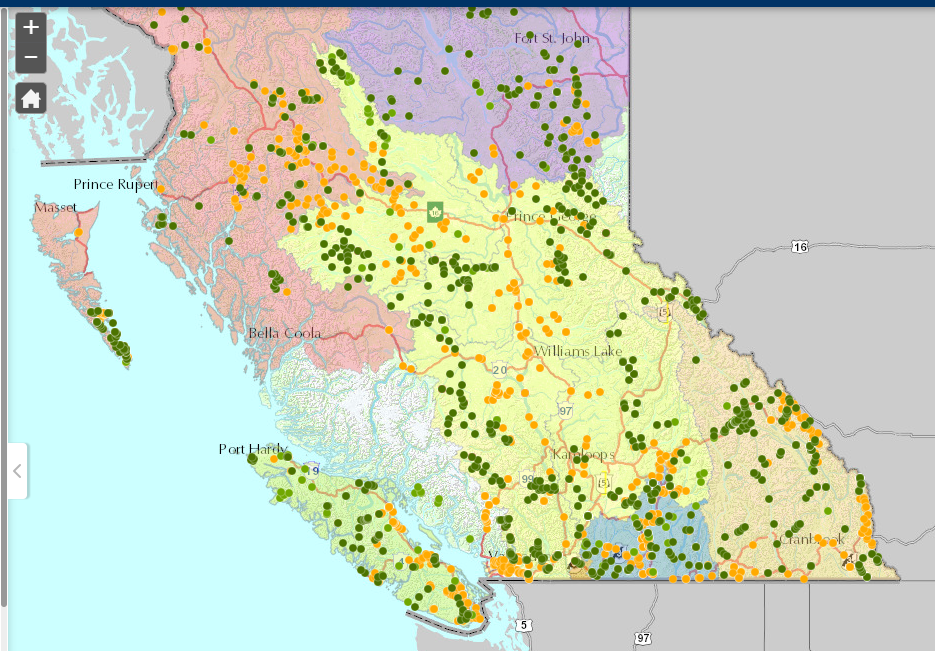Biomonitoring B.C.

Stream monitoring programs usually analyze water and sediment samples to evaluate the health of a waterbody. Biological monitoring can also be included to document the aquatic species that live in a stream. This is important, as aquatic life can be affected by many factors that are not measured with water and sediment samples. This includes changes in flow, habitat degradation, unknown chemicals, spills, and invasive species, among others.
Benthic macroinvertebrates are aquatic, bottom-dwelling animals without backbones. They are a commonly used in biological monitoring for several reasons:
- They are sensitive to many types of disturbance
- They respond to local and cumulative impacts
- They are found in all freshwater ecosystems
- They are an important part of aquatic food webs
The B.C. Ministry of Environment and Climate Change Strategy (ENV) works with Environment and Climate Change Canada (ECCC) to promote the nationally standardized Canadian Aquatic Biomonitoring Network (CABIN) approach. CABIN collects information about benthic macroinvertebrate communities and provides standard methods for collecting and analyzing data.
CABIN includes reference condition approach (RCA) models that are used to evaluate test sites where there are questions about the health of the aquatic ecosystem. The reference models are built with data collected from streams that are minimally affected by human activities. The models match test sites with similar reference streams and compare the structure of the benthic macroinvertebrate communities. The differences provide information about the effect of stressors within the test site’s watershed. There are currently 7 CABIN reference models in B.C.
The goal of Biomonitoring B.C. is to work with our partners to maintain science-based biomonitoring tools to assess aquatic ecosystem health and support the sustainable management of B.C.’s freshwater resources.
Important documents related to CABIN in B.C.
Reference site selection
Reference sites are selected in watersheds that have minimal impacts from human activities and other stressors. Reference sites are selected following guidance provided in Yates and Bailey (2009).
Prior to 2015, reference sites were selected using GIS tools, as described in Norris (2012 PDF, 683KB) and using best professional judgement.
Sampling protocols
- CABIN Wadeable Streams Field Manual
- CABIN Laboratory Methods
- CABIN Wetland Macroinvertebrate Protocol
- CABIN Field Sheets for Wadeable Streams
- Guidelines for Sampling Benthic Invertebrates in B.C. Streams (PDF, 357KB)
CABIN reference condition approach models in B.C.
Supporting documentation for CABIN RCA models are available. These documents are intended for CABIN-trained users to provide background information on model development and guidance for test site assessment.
- Okanagan (PDF, 865KB)
- Central/North Coast (PDF, 380KB)
- Fraser Basin (PDF, 2.4MB)
- Northeast (PDF, 2.4MB)
- Columbia Basin (PDF, 1.4MB)
- Peace Basin (PDF, 928KB)
- Vancouver Island (PDF, 1.6MB)
GIS guidance for habitat data
Landscape level habitat data are required to use the CABIN RCA models. These data are used to match test sites with similar reference sites. The habitat data are calculated using GIS following the methods described in Steeves (2021 PDF, 390KB).
Other Important CABIN Links
Contact information
Please contact us if you have any questions about the provincial Biomonitoring program.

